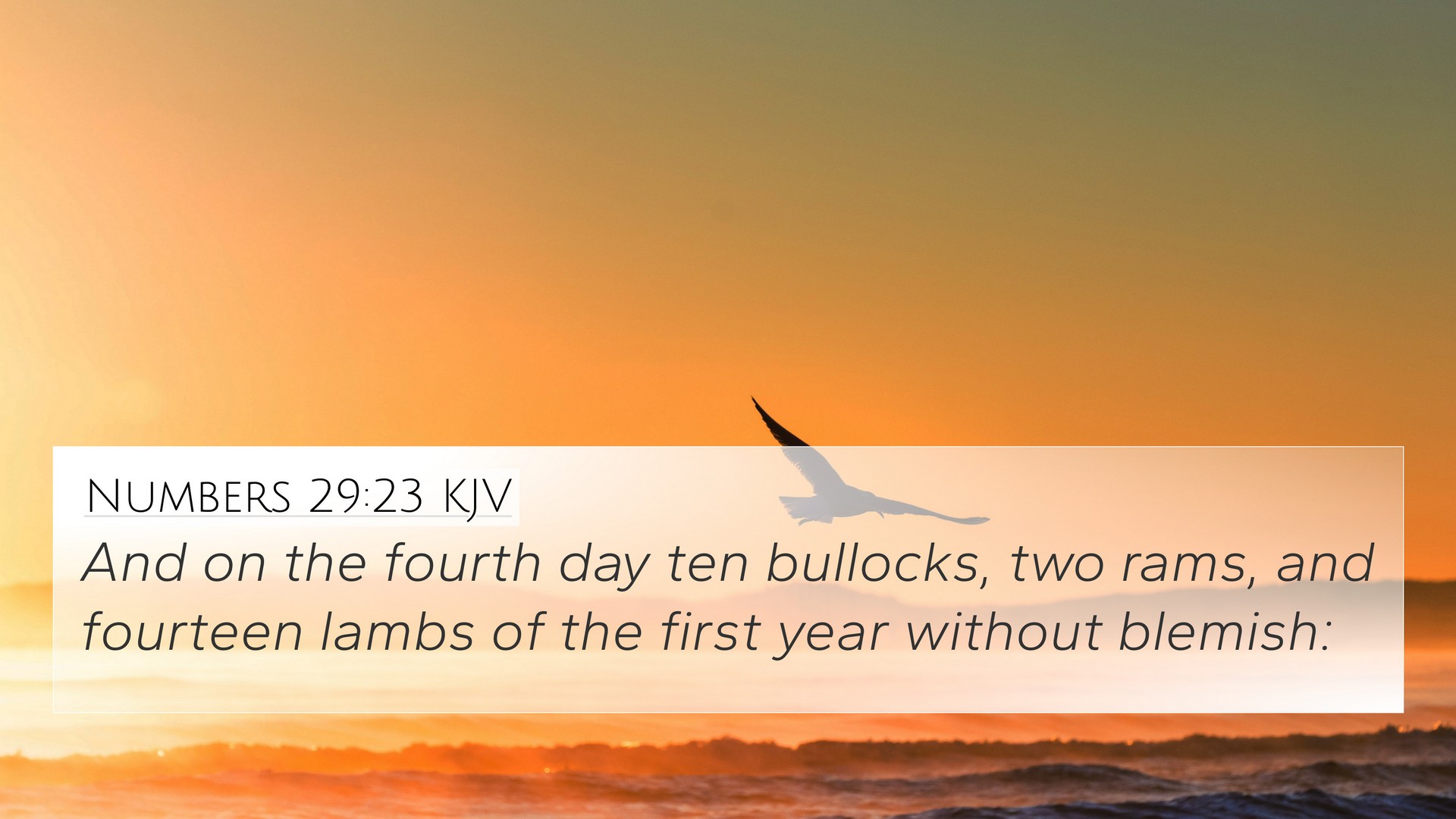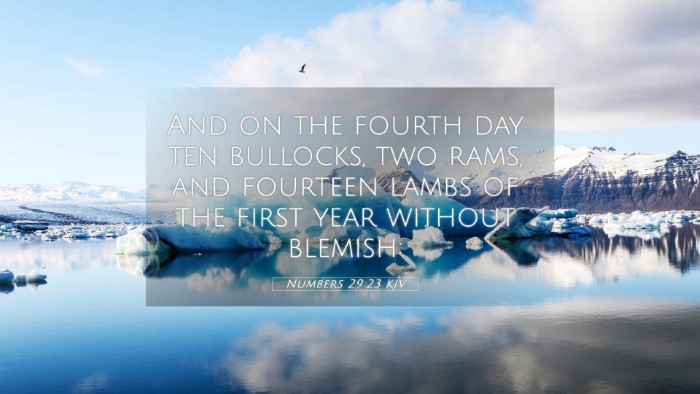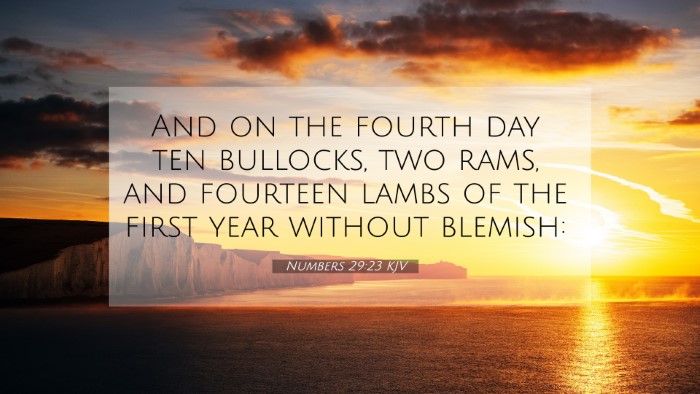Understanding Numbers 29:23
Numbers 29:23 states: "And on the fifth day nine bullocks, two rams, and fourteen lambs of the first year without spot:"
This verse is part of the instructions given to the Israelites regarding the offerings they were to make during the Feast of Tabernacles. The emphasis on numbers and the characteristics of the offerings illustrate key elements of worship, sacrifice, and dedication to God.
Thematic Insights from Commentaries
This verse is found in the larger context of the sacrificial system laid out in the Law of Moses. Commentaries by notable scholars provide profound insights entitled to better understand its spiritual significance.
Matthew Henry's Commentary
Henry highlights the importance of these sacrifices being unblemished and the abundance implied in the quantities given. These offerings demonstrate the Israelites’ devotion and the seriousness of their worship as outlined in Numbers 29:12-39, suggesting a direct link to how God desires purity and abundance in our offerings to Him.
Albert Barnes' Notes
Barnes elaborates on the typological significance of the sacrificial offerings, connecting them to the future sacrifice of Christ. He emphasizes that these bullocks, rams, and lambs represent aspects of Christ's atonement, noting that the act of placing these offerings on the altar was both an acknowledgment of sin and a celebration of God’s provision.
Adam Clarke's Commentary
Clarke discusses the cultural and ritual significance of such detailed specifications in the offerings. He argues that the regularity of such practices shaped the identity of the Israelites, keeping their focus on God through a continual act of giving and remembrance.
Cross-Referencing Biblical Texts
Understanding Numbers 29:23 is enhanced through cross-referencing with other biblical texts. Here are some relevant connections:
- Exodus 12:5: The requirement for a lamb without defect for the Passover, echoing the theme of unblemished offerings.
- Leviticus 1:3: Discussing the burnt offering and the necessity of it being without blemish.
- Hebrews 9:14: References Christ's sacrifice, tying the Old Testament sacrifices to the New Testament fulfillment.
- 1 Peter 1:19: Describes Christ as the lamb without spot or blemish, drawing a direct line to the sacrificial system of the Old Testament.
- Leviticus 23:39: Discussing the Feast of Tabernacles, providing context for the timing of this specific sacrifice.
- Romans 12:1: A New Testament perspective on offering ourselves as living sacrifices, in light of God's mercies.
- Isaiah 53:7: Prophecy about Christ as a silent lamb led to slaughter, relating to the sacrificial theme seen in Numbers.
Bible Verse Parallels
This verse serves as an invitation to explore how God’s demands for sacrifices transform into spiritual sacrifices in the New Testament. These connections enhance our understanding of the continuity of God’s plan from Old Testament to New Testament worship.
Tools for Bible Cross-Referencing
Utilizing various tools can enrich your Bible study and understanding:
- Bible Concordance: Helps locate verses and their themes effectively.
- Bible Cross-Reference Guide: Allows easy navigation through related scriptures.
- Cross-Reference Bible Study: Methods to systematically see connections across scripture.
Conclusions
In summarizing Numbers 29:23, one recognizes its role in the overall narrative of God’s covenant community. The details of sacrificial requirements reflect God's holiness and the seriousness of sin while previewing the ultimate sacrifice in Christ. The interconnectedness of scripture is fundamental in grasping the fullness of its teachings and themes.


